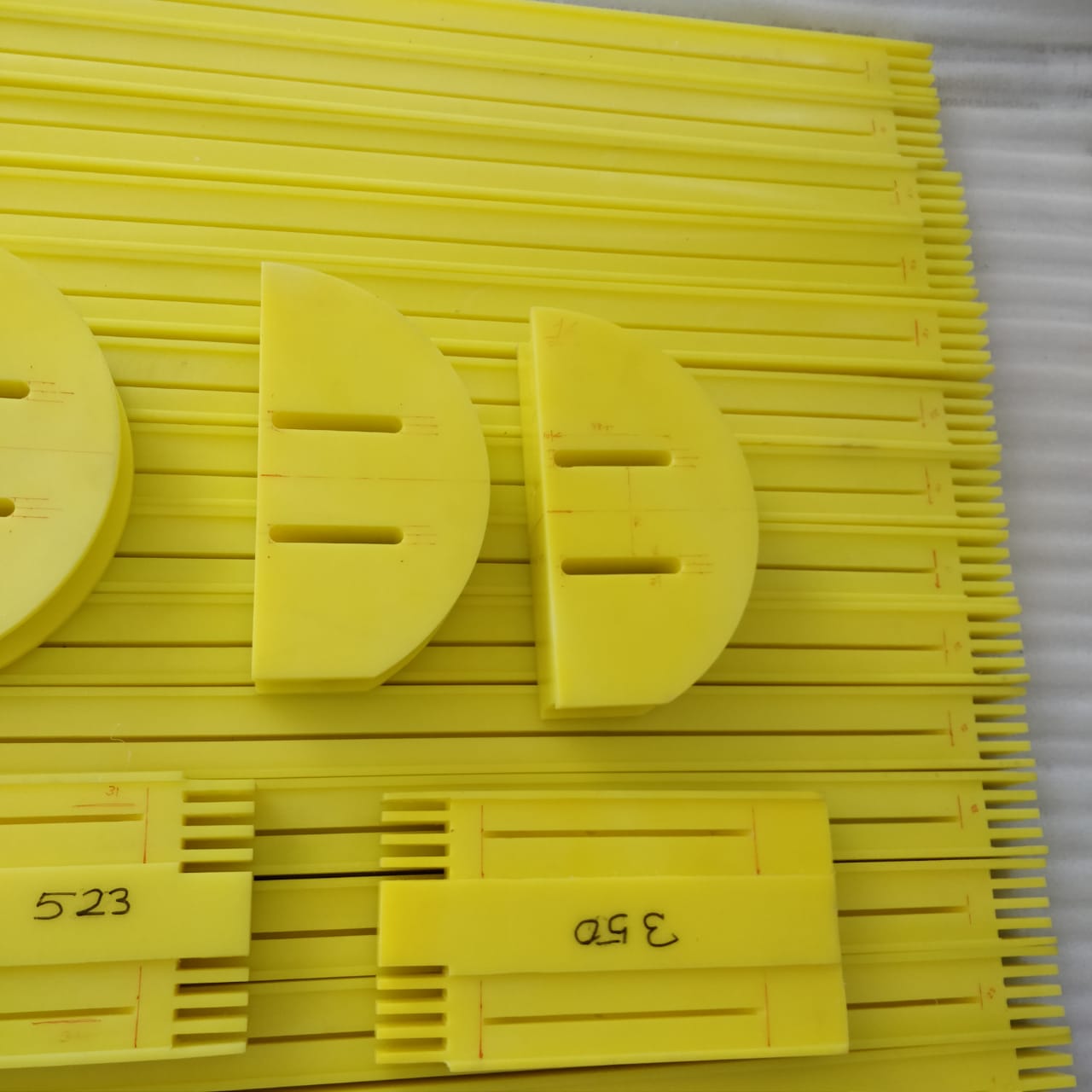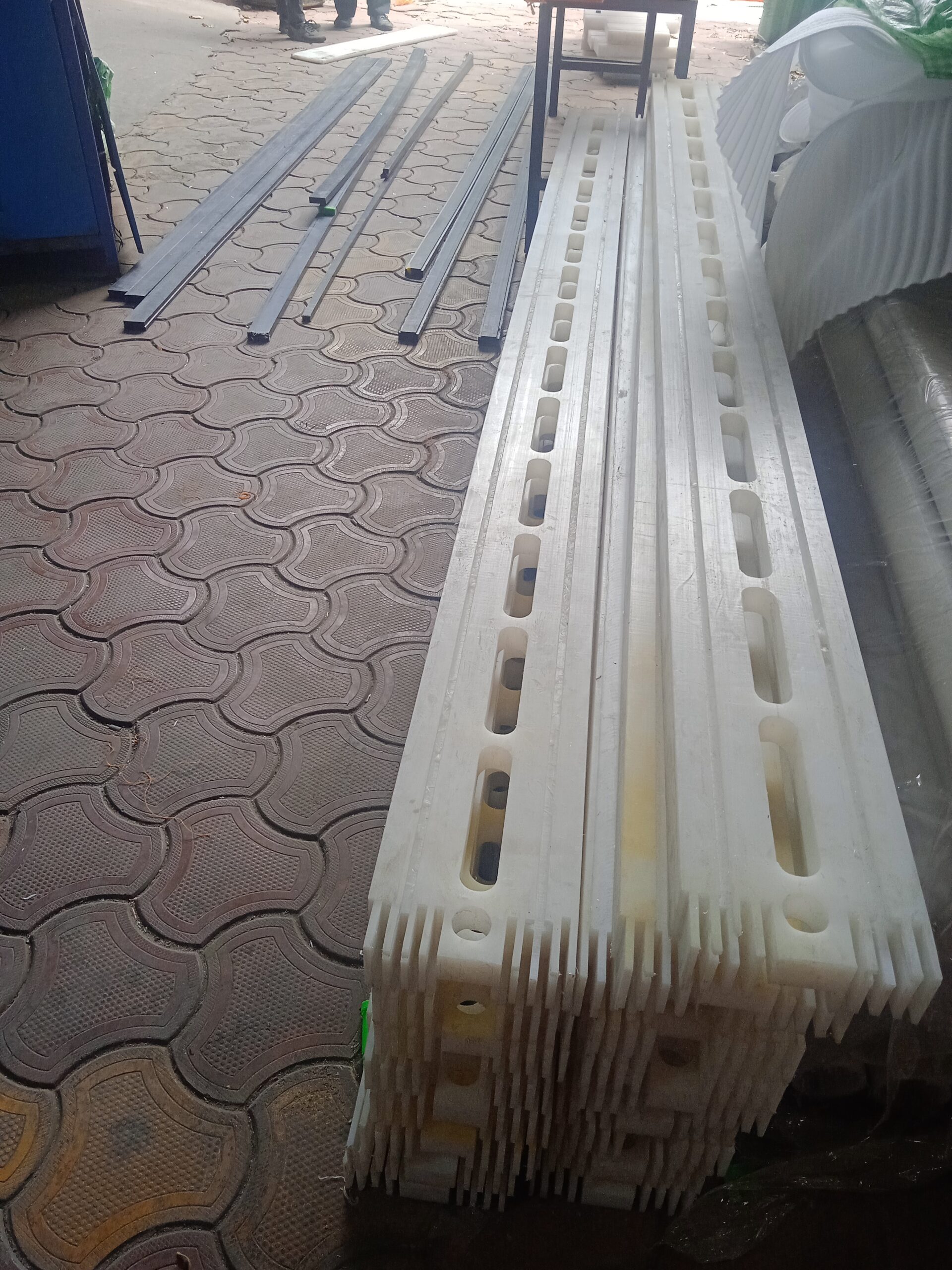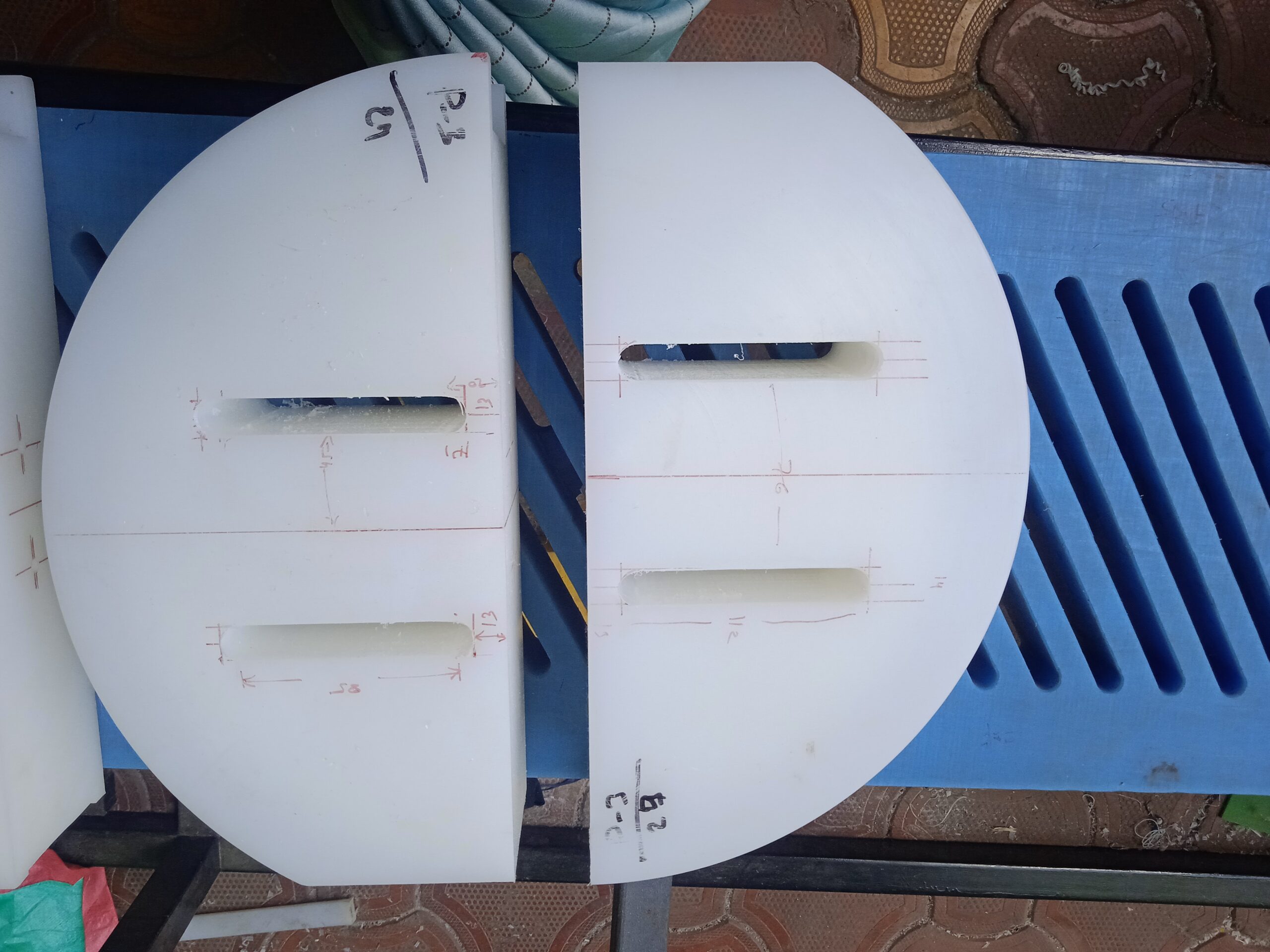Seal Strips
UHMW PE (Ultra-High Molecular Weight Polyethylene) seal strips play a crucial role in solid-liquid separation plants across various industries. These seal strips are essential components in equipment used for filtering, dewatering, and separating solids from liquids. Here's a comprehensive overview of UHMW PE seal strips in solid-liquid plants:
1. Applications in Solid-Liquid Separation Plants
a) Filter Presses:
- Sealing edges of filter plates.
- Preventing leakage between chambers.
b) Belt Filter Presses:
- Edge seals on belts to contain material.
- Sealing between different pressure zones.
c) Vacuum Filters:
- Sealing edges of filter segments.
- Maintaining vacuum integrity.
d) Centrifuges:
- Sealing rotating components.
- Preventing material bypass.
e) Clarifiers and Thickeners:
- Sealing scraper blades.
- Edge seals on overflow weirs.
f) Screens and Classifiers:
- Sealing screen edges.
- Preventing material bypass around screens.
2. Benefits of UHMW PE Seal Strips
a) Chemical Resistance:
- Withstands exposure to various chemicals and pH levels.
b) Wear Resistance:
- Long service life in abrasive slurry environments.
c) Low Friction:
- Reduces wear on mating surfaces (e.g., filter cloths).
d) Flexibility:
- Conforms to slight irregularities in mating surfaces.
e) Non-Stick Properties:
- Resists buildup of solids, facilitating cleaning.
f) FDA Compliance:
- Suitable for food and pharmaceutical applications.
g) Cost-Effective:
- Long service life reduces replacement frequency.
h) Easy Fabrication:
- Can be easily cut, drilled, and shaped to fit specific equipment.
3. Design Considerations
a) Profile Shape:
- Customized to fit specific equipment geometries.
- May include features like lips, grooves, or reinforced edges.
b) Thickness and Width:
- Determined by the specific application and sealing requirements.
c) Mounting Method:
- May include holes for bolting, grooves for sliding insertion, or adhesive bonding.
d) Compression Characteristics:
- Designed to maintain sealing under specified pressures.
e) Edge Design:
- Beveled or rounded edges to prevent damage to filter media.
4. Installation and Maintenance
a) Installation:
- Often designed for easy replacement without major equipment disassembly.
- May require specific tools or techniques for proper fitting.
b) Inspection:
- Regular checks for wear, deformation, or damage.
c) Cleaning:
- Periodic cleaning to remove build-up and maintain sealing efficiency.
d) Replacement:
- Timely replacement to prevent leaks and maintain separation efficiency.
5. Performance Factors
a) Sealing Efficiency:
- Ability to prevent leakage or bypass of materials.
b) Wear Rate:
- Longevity in continuous operation.
c) Chemical Compatibility:
- Resistance to process chemicals and cleaning agents.
d) Temperature Resistance:
- Ability to maintain properties across the operating temperature range.
6. Industry-Specific Considerations
a) Mining and Mineral Processing:
- Resistance to highly abrasive slurries.
b) Wastewater Treatment:
- Compatibility with biological processes and chemicals.
c) Food and Beverage:
- Compliance with food safety regulations.
d) Chemical Processing:
- Resistance to aggressive chemicals and solvents.
e) Pulp and Paper :
- Ability to handle fibrous materials and process chemicals.
7. Advantages over Traditional Materials
a) vs. Rubber:
- Better chemical resistance and longer life in many applications.
b) vs. Metal:
- Lower friction, reducing wear on filter media.
c) vs. Other Plastics:
- Superior wear resistance and impact strength.



8. Limitations
- Not suitable for very high-temperature applications.
- May require more frequent replacement in extremely abrasive conditions.
- Potential for cold flow under high, constant loads.
UHMW PE seal strips are critical components in solid-liquid separation plants, contributing to improved efficiency, reduced maintenance, and enhanced product quality. Their unique combination of properties makes them well-suited for the challenging environments found in these applications.

